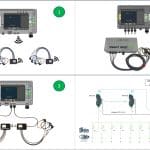Stay out of trouble with these best practices
Conduct PQ testing pre- and post-installation. PQ testing before the PV system’s commissioning can provide a baseline to identify legacy issues, insulating the PV installer from preexisting issues. Post-commissioning tests can then isolate any PQ disruptions introduced by the PV installation itself.
This two-phase approach ensures grid readiness and verifies that PV integration has not degraded power quality. For the Xalapa site, it is difficult to determine if the harmonics problem existed before the PV system went online, or the PV system is the source.
Implement annual PQ and electrical health audits
By testing power quality at least annually, project teams can assign responsibility for faults, validate performance, and ensure long-term reliability.
Correlate system performance with PQ metrics
Make it part of your system maintenance process to conduct PQ tests and correlate PQ metrics to system performance. This helps you spot issues before they become problems and provides deeper insight into potential degradation and operational health.
Incorporate PQ results into acceptance and warranty protocols
Doing so increases accountability across all stakeholders, from suppliers to installers, and site owners.
Spec in all install a fixes, permanent PQ meter
While more expensive, a permanent PQ meter installation will provide far more data, on a consistent basis, into PQ events. Moreover, this may be the best option for problematic sites.
Compile warranty and compliance evidence Creating a paper trail of electrical performance test data goes a long way to supporting warranty claims. In addition, it satisfies regulatory requirements.







